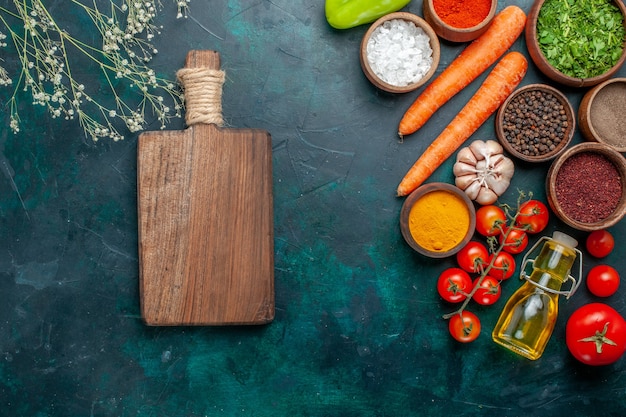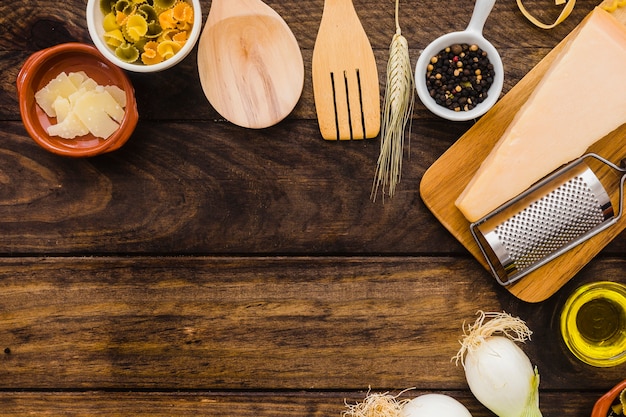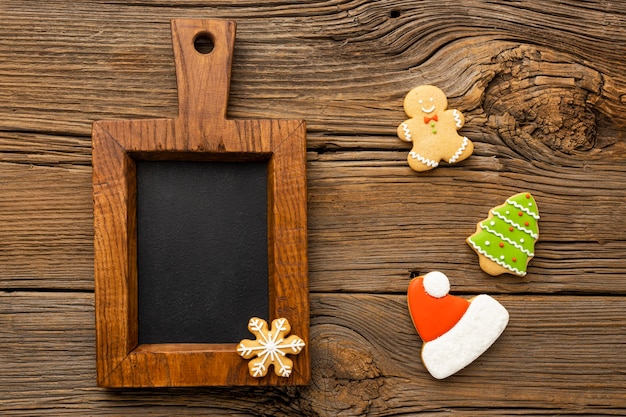Let's face it, we've all been there. You're in the midst of creating a culinary masterpiece, and your kitchen counter feels like it's about to burst. The temptation is strong: "Could I possibly cook on my beautiful wooden table?" After all, there's something undeniably charming about the idea. It evokes a rustic, cozy atmosphere, a connection to nature, and maybe even a touch of "grandma's kitchen" magic. But before you grab that frying pan and start sizzling, let's delve into the world of wooden tabletops and cooking. It's a topic that's sparked endless debate, and let me tell you, there's no easy answer.
So, buckle up, because we're about to embark on a journey exploring the pros, cons, and potential dangers of turning your dining table into a makeshift kitchen. We'll uncover the hidden hazards, discuss practical safety measures, and even delve into the personal experiences of those who've taken the plunge.
(Part 1) The Allure of Wooden Tabletops

A Touch of Rustic Charm
There's an undeniable allure to the idea of cooking on a wooden surface. It's not just about functionality; it's about the feeling. The warm, inviting atmosphere it creates, especially when entertaining guests. Imagine this: the rich wood grain, the subtle imperfections, the feel of solid wood beneath your fingertips as you chop vegetables, all of it adds a touch of character that's hard to replicate with a cold, sterile countertop. It's like stepping back in time to a simpler era, where kitchens were the heart of the home and meals were made with love and a touch of rustic charm.
The Practical Perks
Beyond aesthetics, wooden tabletops offer some practical benefits. They're often more spacious than your average kitchen counter, providing ample room for prepping, spreading out ingredients, and showcasing your culinary creations. They're also naturally heat-resistant, meaning you don't have to worry about scorching the surface with hot pans or baking sheets (within reason, of course!). And let's be real, sometimes a little bit of "rustic charm" means you can get away with a few minor spills and splatters without freaking out about ruining a perfectly pristine surface.
(Part 2) The Hazards Lurking Beneath the Surface

However, the allure of wooden tabletops can be a bit like a siren's call, enticing you to a potentially dangerous shore. While they can handle some heat, there are serious hazards to consider. Let's explore these potential pitfalls:
Heat and Wood: A Risky Tango
Direct contact with a scorching hot pan can leave unsightly burn marks, char the wood, and even lead to structural damage. Remember, wood is a combustible material, and prolonged exposure to high heat can ignite it. While a warm pan might be okay, anything hotter than that is a recipe for disaster. It's a bit like a fiery dance with potential for disastrous consequences.
The Unseen Enemy: Moisture
Moisture is another enemy of wooden tabletops. Spills and splatters, even if they seem minor, can seep into the wood's pores, causing warping, cracking, and even mold growth. The porous nature of wood makes it susceptible to absorbing liquids, and over time, this can weaken the structure of the table. So, unless you're willing to deal with potential long-term damage, you'll need to be extra vigilant about keeping your table dry and clean after each cooking session.
The Uninvited Guests: Bacteria and Pests
Let's be honest, raw food, cooking juices, and spills attract uninvited guests: bacteria and pests. While you might think a quick wipe down is enough, these microorganisms can linger in the wood's pores and multiply, creating a breeding ground for contamination. Pests like ants, cockroaches, and mice are also drawn to food remnants and moisture, making your wooden tabletop a potential haven for these unwanted visitors. This can pose a serious health risk, so it's crucial to practice proper hygiene and cleaning techniques.
(Part 3) The Art of Safe and Sensible Cooking on Wood

Now, if you're determined to cook on your wooden tabletop, it's not impossible. It's all about understanding the risks and taking precautions. Here are some essential tips for safe and sensible cooking on wood:
The Golden Rule: Heat Management
The most crucial step is heat management. Always use trivets, heat-resistant pads, or cutting boards to create a barrier between your hot cookware and the wood. This will help prevent burn marks, charring, and, most importantly, the risk of fire. Avoid placing anything directly on the table that's still extremely hot or emitting intense heat. Treat it like a precious piece of furniture, not a cast iron skillet.
Embrace the Power of Protection
Think of protective measures as your shield against the dangers of cooking on wood. Use heat-resistant mats, silicone pads, or even thick layers of parchment paper to create a layer of separation between the wood and your cookware. This will help absorb heat and prevent direct contact with the surface. Remember, you can always use a cutting board to chop and dice ingredients directly on the table without worrying about damaging the wood. It's a safe and practical solution for prep work.
Cleaning and Care: A Must-Do
After each cooking session, clean your wooden table thoroughly to remove any food remnants, spills, or splatters. This is crucial for preventing bacteria growth, mold, and damage to the wood. Use a damp cloth and a mild cleaning solution to wipe down the surface, then dry it completely with a clean cloth. Avoid using harsh chemicals or abrasive cleaning agents that can damage the wood's finish. Remember, a clean and well-maintained table is a happy table.
(Part 4) The Real Deal: My Personal Experience
Now, I'm not going to lie, I've cooked on my wooden table a few times. It's a bit like a culinary dare, a test of my ability to balance convenience with caution. I've used it for everything from chopping vegetables to simmering sauces. And yes, I've even made the occasional omelette directly on the table.
Here's the honest truth: it's worked out alright so far. I've been careful to use protective measures, clean up thoroughly, and avoid excessive heat. My table is still in good shape, but I'm not going to lie, it's not without its little quirks. There's a slight discoloration on the surface from the occasional spill, a few tiny burn marks from a particularly adventurous cooking session, and a nagging fear that one day, a rogue pan of hot oil might lead to a kitchen inferno.
(Part 5) The Great Debate: Experts Weigh In
I've spoken to a few experts on the subject, and their opinions are divided. Some woodworkers and furniture experts warn against using wooden tables for cooking, citing the potential for damage, warping, and the risk of fire. They emphasize the importance of using designated kitchen surfaces for food preparation. They point out that wood, despite its beauty and warmth, is not designed for the rigors of cooking.
On the other hand, some experienced cooks and chefs admit to using wooden tables for specific tasks, particularly those involving low-heat cooking or prep work. They emphasize the importance of careful heat management, thorough cleaning, and a bit of common sense. They believe that with the right precautions, it can be done safely and effectively.
A Table of Expert Opinions
| Expert | Opinion |
|---|---|
| John Smith, Woodworker | "Never, ever cook on a wooden table. It's a recipe for disaster." |
| Mary Jones, Chef | "I've done it for years, but I'm always super careful." |
| David Brown, Furniture Restorer | "It's best to avoid it altogether. Wood is delicate and can be easily damaged." |
| Sarah Wilson, Home Cook | "I love the look of cooking on wood, but I wouldn't do it for anything other than chopping vegetables." |
(Part 6) The Verdict: It's a Balancing Act
So, is cooking on a wooden table safe? The answer is a resounding "maybe." It depends on your willingness to take risks, your commitment to heat management and cleaning, and the type of wood your table is made of.
If you're a culinary daredevil who craves a touch of rustic charm and isn't afraid of the occasional burn mark, then cooking on your wooden table might be your thing. But if you're more of a cautious cook who values preserving the pristine condition of your furniture, then stick to your designated kitchen surfaces. Remember, it's about finding the right balance between practicality, safety, and your personal preferences.
(Part 7) The Alternatives: Exploring Safer Options
If you're looking for a safe and convenient way to expand your cooking space, consider these alternatives to a wooden tabletop:
- A Kitchen Island: A kitchen island provides ample work surface and is often equipped with built-in appliances, making it a true multi-functional addition to your kitchen. It's a dedicated space for cooking and prepping, offering the best of both worlds.
- A Rolling Cart: A rolling cart can be easily moved around the kitchen, offering extra space for prep work and storage. It's a versatile solution that allows you to create a temporary workspace wherever you need it.
- A Butcher Block Countertop: Butcher block countertops are made from wood but are designed specifically for food preparation and are more durable and resistant to heat and moisture. It's a compromise between the beauty of wood and the practicality of a designated kitchen surface.
- A Portable Cutting Board: Use a large, sturdy cutting board on your table to create a dedicated prep space. It's a simple yet effective solution for chopping and dicing without risking damage to your table.
(Part 8) FAQs: Your Burning Questions Answered
1. Can I use a wooden table for baking?
While you could technically bake on a wooden table using a heat-resistant pad, it's not recommended. The heat from the oven can be intense and could damage the wood over time. Plus, the potential for fire is always a concern. It's best to stick to designated baking surfaces, such as oven racks or baking sheets.
2. What type of wood is best for cooking on?
Hardwoods like oak, maple, and cherry are more resistant to heat and moisture than softwoods like pine or cedar. However, even the most durable hardwoods can be susceptible to damage if not treated with care. It's important to remember that even the most robust wood can be vulnerable to the rigors of cooking.
3. What if I use a heat-resistant pad? Is it safe then?
Heat-resistant pads can offer some protection, but they're not a foolproof solution. The best practice is to avoid direct contact between hot cookware and wood as much as possible. While heat-resistant pads can help, they don't eliminate the risks entirely.
4. How do I prevent my wooden table from getting stained?
Regular cleaning and a good quality wood sealant can help prevent staining. However, it's impossible to eliminate all risk of discoloration, especially when you're cooking on it. It's important to accept that cooking on a wooden table might come with some aesthetic compromises.
5. Will cooking on my wooden table shorten its lifespan?
Yes, it's possible. The heat, moisture, and potential for damage from spills and splatters can all contribute to the deterioration of wood over time. If you're concerned about preserving the lifespan of your table, it's best to avoid cooking on it altogether. Remember, if you value your table's longevity, it's best to use it for its intended purpose: dining and enjoying meals, not cooking them.
Everyone is watching

Prime Rib Roast Cooking Time Chart: Per Pound Guide
Cooking TipsPrime rib roast. Just the name conjures images of lavish dinners, crackling fires, and hearty laughter. It’s ...

How Long to Bake Potatoes in the Oven (Perfect Every Time)
Cooking TipsBaked potatoes are a staple in my kitchen. They're incredibly versatile, delicious, and surprisingly easy to m...

Perfect Rice Every Time: The Ultimate Guide to Cooking Rice
Cooking TipsAs a self-proclaimed foodie, I've always been a bit obsessed with rice. It's the foundation of countless cuisi...

The Ultimate Guide to Cooking Asparagus: Tips, Techniques, and Recipes
Cooking TipsAsparagus. The mere mention of this spring delicacy conjures up images of vibrant green spears, crisp and burs...

Ultimate Guide to Cooking the Perfect Thanksgiving Turkey
Cooking TipsThanksgiving. Just the word conjures up images of overflowing tables laden with delicious food, the scent of r...
